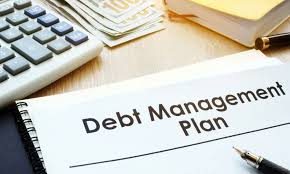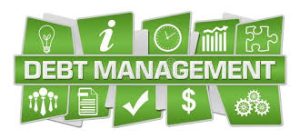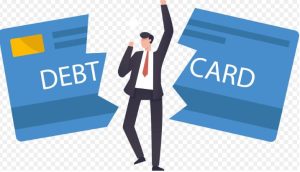Standing at the crossroads of financial recovery can feel overwhelming. If you’re struggling with debt, you’re likely considering two major options: a debt management plan or bankruptcy.
Both serve as financial reset buttons, but they work in fundamentally different ways. This comprehensive guide will help you understand which path might be right for your situation.
Skale Money Key Takeaways
| Feature | Debt Management Plan | Bankruptcy |
| Timeline | 3-5 years | 4-6 months (Ch. 7) or 3-5 years (Ch. 13) |
| Credit Impact | Minimal to moderate | Severe (7-10 years) |
| Cost | Setup fee + monthly fee | $1,500-$4,000 in legal fees |
| Debt Resolution | Repay in full with reduced interest | Partial or full debt elimination |
| Best For | Those with steady income who can pay over time | Those needing immediate debt relief |
Table of Contents
1. Understanding Debt Management Plans: The Basics
A debt management plan (DMP) represents a structured approach to debt repayment that can help you regain control of your finances without the severe consequences of bankruptcy.
Through a DMP, you’ll work with a credit counseling agency that negotiates with your creditors on your behalf.
Key Features:
- One consolidated monthly payment instead of multiple bills
- Reduced interest rates (often by 50% or more)
- Waived late fees and penalties
- Professional credit counseling support
- Minimal impact on credit score compared to bankruptcy
- Typical completion timeline of 3-5 years
2. Types of Bankruptcy: Chapter 7 vs. Chapter 13
Bankruptcy offers a legal process for eliminating or restructuring debt when your financial obligations become impossible to manage. Understanding the two main types is crucial for making an informed decision.
| Aspect | Chapter 7 | Chapter 13 |
| Process | Liquidation of assets | Restructured payment plan |
| Timeline | 4-6 months | 3-5 years |
| Credit Impact | 10 years on credit report | 7 years on credit report |
| Asset Protection | Limited exemptions | Keep assets while paying |
| Income Requirements | Must pass means test | Regular income required |
| Best For | Low income, few assets | Higher income, valuable assets |
3. Eligibility Requirements: Do You Qualify?
Before choosing between a debt management plan and bankruptcy, you need to understand if you meet the requirements for either option.
Debt Management Plan Requirements:
- Steady income source to make monthly payments
- Unsecured debt (typically $10,000 or more)
- Ability to complete the program in 5 years or less
- Willingness to close credit card accounts
- Commitment to credit counseling sessions
Bankruptcy Requirements:
- Chapter 7: Pass the means test (income below state median)
- Chapter 13: Regular income and debt limits ($419,275 unsecured)
- Completion of pre-filing credit counseling
- No previous bankruptcy discharge within time limits
- Full disclosure of all assets and financial records
4. Cost Comparison: Breaking Down the Numbers
Understanding the financial implications of each option is crucial for making an informed decision.
Debt Management Plan Costs:
- Setup fee: $30-$50
- Monthly maintenance fee: $20-$75
- Total program cost: $1,000-$3,000 over program life
- Potential savings: 40-50% on interest charges
- No attorney fees required
Bankruptcy Costs:
- Attorney fees: $1,500-$3,500
- Court filing fees: $335 (Chapter 7) or $310 (Chapter 13)
- Credit counseling fees: $50-$100
- Total costs: $2,000-$4,000 upfront
- Additional trustee fees for Chapter 13
5. Impact on Your Financial Future
The long-term consequences of your choice will affect your financial life for years to come.
Credit Score Effects:
- Debt Management Plan
- Initial drop of 30-50 points
- Recovery possible within 2-3 years
- Positive payment history builds credit
- Can keep one card for emergencies
- Bankruptcy
- Immediate drop of 130-200 points
- 7-10 years on credit report
- Difficulty getting new credit
- May affect employment opportunities
6. Success Rates and Statistics
Understanding success rates can help you gauge the likelihood of completing either program successfully.
Statistical Analysis:
- DMP completion rates: 50-60%
- Chapter 7 discharge rate: 95%
- Chapter 13 completion rate: 33-45%
- Post-DMP debt-free status: 85%
- Post-bankruptcy financial recovery: 65%
7. Life After Your Decision: What to Expect
Your financial recovery journey will vary depending on your choice.
Recovery Timeline:
- First 30 Days:
- DMP: Begin consolidated payments
- Bankruptcy: Automatic stay stops collections
- First 6 Months:
- DMP: Reduced interest rates take effect
- Bankruptcy: Chapter 7 discharge or Chapter 13 plan confirmation
- First Year:
- DMP: Established payment routine
- Bankruptcy: Begin credit rebuilding
- Long-term:
- DMP: Debt-free in 3-5 years
- Bankruptcy: Record removal in 7-10 years
8. Alternative Options to Consider
Before committing to either a debt management plan or bankruptcy, consider these alternatives:
- Debt Consolidation Loans
- Pros: Single payment, fixed interest rate
- Cons: May need good credit, doesn’t reduce debt
- Debt Settlement
- Pros: Reduce total debt amount
- Cons: Severe credit impact, tax implications
- DIY Debt Management
- Pros: No fees, maintain control
- Cons: No professional support, harder to negotiate
9. Making Your Final Decision: A Decision-Making Framework
Consider these factors when making your choice:
Decision Checklist:
- Current financial situation
- Income stability
- Asset ownership
- Debt amount and type
- Future Goals
- Homeownership plans
- Career aspirations
- Family planning
- Risk Tolerance
- Credit score impact
- Privacy concerns
- Stigma considerations
Conclusion
Choosing between a debt management plan and bankruptcy is a significant decision that requires careful consideration of your unique circumstances.
While a DMP offers a gentler approach to debt resolution with less impact on your credit, bankruptcy provides a more immediate solution for overwhelming debt. Consider your financial goals, current situation, and long-term implications before making your choice.
Frequently Asked Questions
Can I include all types of debt in a debt management plan?
No, DMPs typically only include unsecured debt like credit cards and personal loans. Mortgages, car loans, and student loans usually can’t be included.
How soon can I buy a house after bankruptcy vs. DMP?
With a DMP, you may qualify for a mortgage after completing the program. After bankruptcy, you’ll typically need to wait 2-4 years after discharge.
Will I lose my assets in bankruptcy or DMP?
A DMP doesn’t affect your assets. In Chapter 7 bankruptcy, non-exempt assets may be sold, while Chapter 13 allows you to keep assets while repaying debts.
Can I be denied for either option?
Yes. DMPs require steady income and commitment to repayment. Bankruptcy requires qualifying under specific income and debt criteria.
Expert Tips and Resources
- Find a reputable credit counseling agency through the National Foundation for Credit Counseling (NFCC)
- Consult with multiple bankruptcy attorneys before choosing one
- Use free financial planning tools from nonprofit organizations
- Consider government programs for specific types of debt
Remember, both a debt management plan and bankruptcy can provide paths to financial recovery. The best choice depends on your specific situation, goals, and commitment to the process.
![]()




